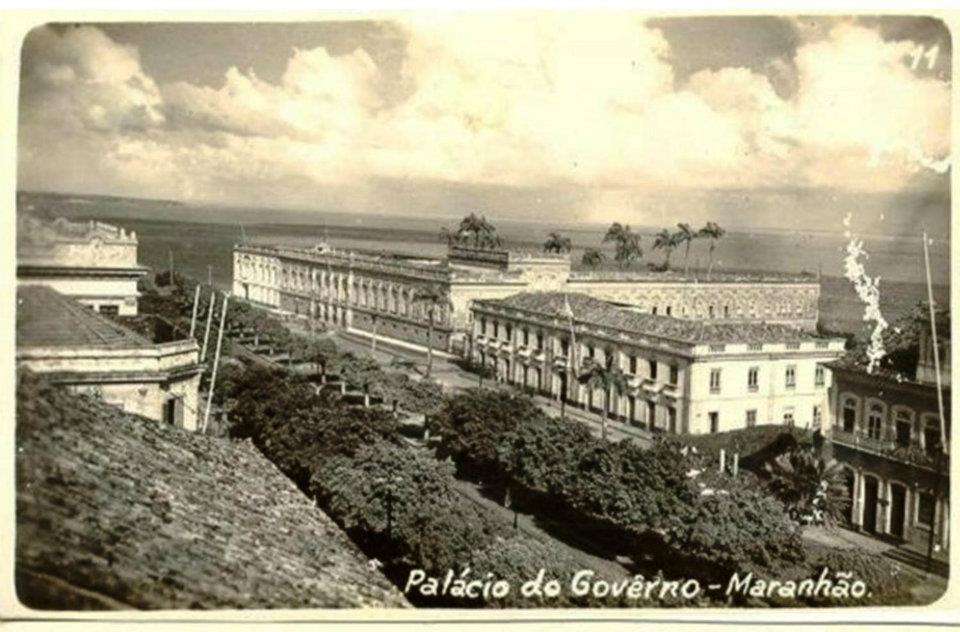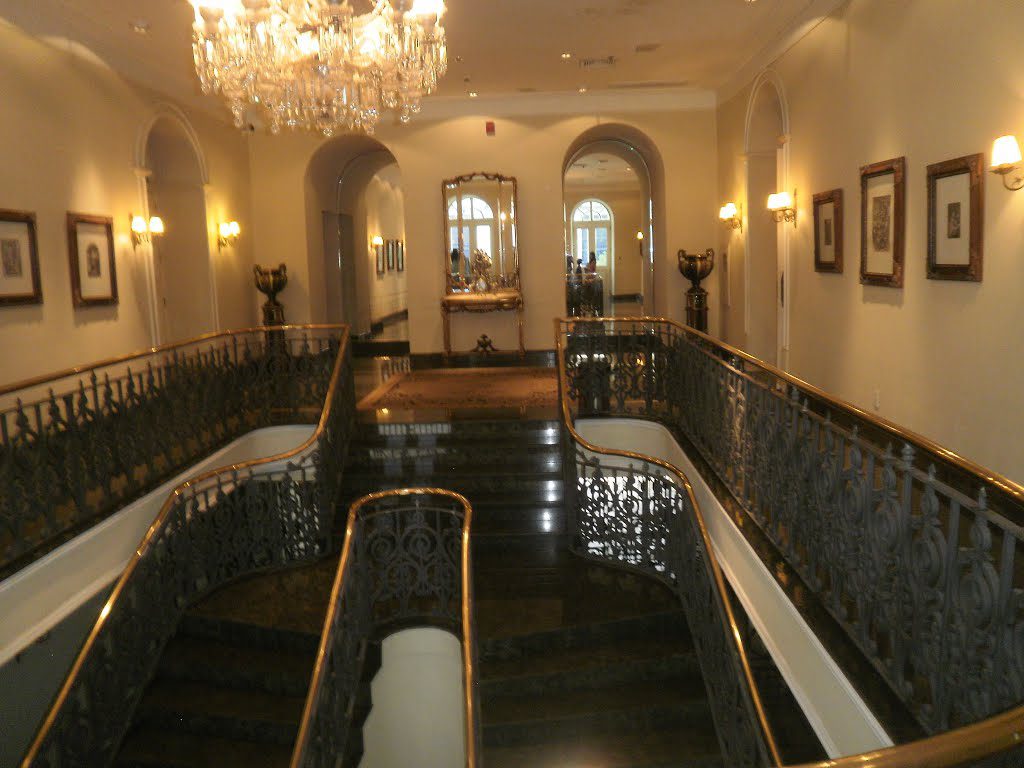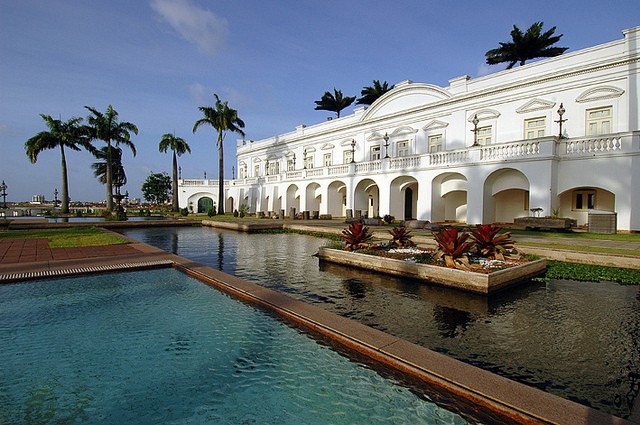History of the Palácio dos Leões in São Luís do Maranhão
The Palácio dos Leões is one of the most important historical and architectural landmarks in São Luís, Maranhão. With a built area of 3,000 square metres, the palace is divided into three wings: residential, administrative and visitor.

Video about the Palace of the Lions in São Luís do Maranhão

Palácio dos Leões em São Luís do Maranhão
1. History of the Palácio dos Leões
The Palácio dos Leões houses a collection of 1,300 works of art, displayed in five magnificent rooms. The collection includes paintings by famous artists, crystal, Portuguese silverware, French carpets and porcelain. One of the highlights is the collection of engravings by the Maranhão journalist and theatre director Arthur Azevedo.
The palace, which is the political and institutional seat of the Maranhão state government, dates back to 8 September 1612. On that day, the French, under the command of Daniel de La Touche, Lord of La Ravardière, founded Equinoctial France between the mouths of the Anil and Bacanga rivers, on the island of Upaon Açu, and began building a fort which they named São Luís, in honour of the King of France.
After the expulsion of the French in 1615, Captain Major Jerônimo de Albuquerque began building the governor’s residence on the site of the São Luís fort, known to the Portuguese as São Filipe, using local labour and following the design of military engineer Francisco de Frias Mesquita.
In 1766, Governor Joaquim de Mello e Póvoas ordered the demolition of the old Government Palace and began the construction of a new headquarters. The building, made of stone and lime, had a sober, squat architecture, with overhanging eaves and a low roof. The entrance, originally on the side, was moved to the centre during the 1857 renovation.
Throughout the Empire, the Palácio dos Leões underwent several renovations.

2. Renovation of the Palácio dos Leões
In 1968, the then Governor José Sarney carried out internal improvements to the building, which had already undergone several renovations. The palace was enlarged by the purchase of the building of the former tax office of the National Treasury, which was next door, greatly increasing its administrative facilities.
In 1970, Governor Pedro Neiva de Santana completed and finished the decoration of the Palácio dos Leões begun during the Sarney administration, restoring the Pinacoteca and renovating the decoration of all the rooms and annexes, including the installation of chandeliers, carpets and curtains.
The most recent restoration has included the restoration of the main installations and the roof, as well as the registration of works of art, furniture, silverware, crockery and other goods and objects for the inventory.

3. Cultural Collection
The Palácio dos Leões houses a rich cultural collection. With an imposing façade, guarded by two lions representing the executive, the palace has a 3,000 square metre built area, divided into three wings: residential, administrative and visitor. These rooms house a rich cultural collection, including an art gallery, sculptures, porcelain, silver, crystal and furniture.
The five noble halls contain 1,300 works of inestimable artistic value, which have been inventoried, listed and catalogued, and can be admired by visitors. Among the pieces on display are chandeliers, candlesticks, French carpets, crystal chandeliers, fine porcelain from countries such as China, France and Austria, and Portuguese silverware.
The palace houses eclectic furniture, with pieces dating back over 200 years.

3.1 Rarities
The Palácio dos Leões collection also includes rarities such as a handmade Biedermier and the Arcais (a piece of furniture used to store religious objects), which belonged to the chapel of Bom Jesus dos Navegantes. Another gem is the art collection of Arthur Azevedo, which is part of the Casa’s collection, including oil paintings by famous artists such as Eliseu Visconti, Vitor Meireles and Parreiras.
4. The Architecture
The architecture of the Palácio dos Leões is a mixture of historical influences. The current structure has a neoclassical façade with large columns and detailed ornamentation typical of colonial buildings. The interior is luxuriously decorated with period furniture, works of art and historical artefacts.
5. Cultural and Historical Significance
The Palácio dos Leões is not only a government building, but also a symbol of Maranhão’s cultural and historical heritage. It houses valuable art collections and historical documents that reflect the rich history of the region, and is an important place to understand the colonial history and cultural evolution of São Luís.
6. Functions
- Seat of Government: The Palace is the official residence and office of the Governor of Maranhão.
- Museum: Parts of the Palace are open to the public as a museum, with exhibitions on the history and culture of Maranhão, including artefacts, works of art and historical documents.
- Cultural Events: The grounds and halls of the Palace are used for various cultural events, official ceremonies and receptions.
7. The location
The Palácio dos Leões is located in the historic centre of São Luís, a UNESCO World Heritage Site. Its location offers breathtaking views of the city and the Bay of São Marcos, adding to its charm as a tourist destination.
8. Visiting
The Palace is a popular tourist attraction in São Luís. Visitors can take guided tours to explore its richly decorated halls, learn about its history and appreciate its architectural beauty. Visits usually include access to sections of the museum where you can see exhibitions related to the history of Maranhão and the palace itself.
9. Significance
The Palácio dos Leões is a testimony to the rich history and culture of São Luís. It is a key site for understanding the region’s colonial past, the evolution of its architecture and its role in the governmental and cultural development of Maranhão.
Tourist guide to São Luís do Maranhão
Publicações Relacionadas
Historical curiosities about São Luís do Maranhão
Casa Real Empório: History and Culture Combined
Cristo Rei Palace: Architecture of the 19th Century
History and Colonial Architecture of São Luís do Maranhão
Benedito Leite Public Library's Rich History
Church of Nossa Senhora dos Remédios History
Josué Montello House of Culture in Maranhão History
Catarina Mina: The Story Behind the Alley
Gonçalves Dias Square: A Historic Landmark
Cafua das Mercês: Preserving Black Memory Today
Cine Éden: A Historic Cinema in São Luís
Convent and the Church of Nossa Senhora do Carmo History
This post is also on:
![]() Português
Português ![]() English
English ![]() Deutsch
Deutsch ![]() Español
Español ![]() Français
Français



















